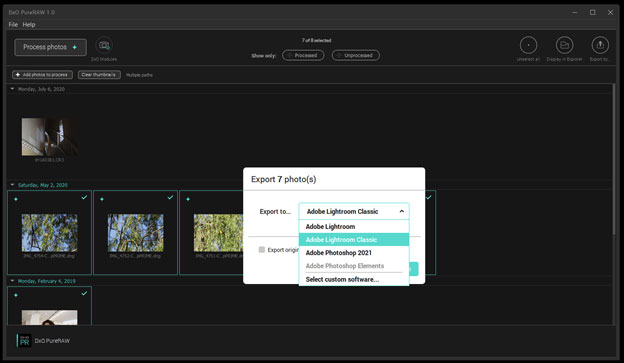

The route I’d been using was to shoot RAW with the Lightroom app, but then take the DNGs into Capture One, which does a way better job of editing them. You can try using noise reduction, but any gain is quickly offset by a loss in detail – and that’s something you can’t really afford in images which have only 12 megapixels anyway. Why is that good news? Because if you’ve used the Lightroom app on an iPhone to capture a RAW file (also in the DNG format, but not a Linear DNG), you’ll know that when the image is processed in Lightroom, the noise levels are pretty horrendous, even at the lowest ISOs. This means Apple has taken care of this base-level processing, not Adobe.


Apple has used the Linear DNG format, which is a kind of part-processed raw file which contains all the extended raw image data of regular raw files, but has already been demosaiced into a full color image. The iPhone 13 ProRAW format comes with good news and bad news. iPhone 13 ProRAW: good news (mostly) and bad news (some) It doesn’t just change the results they can expect, but potentially their workflow too. When a large and increasing proportion of a photographer’s images cannot be processed in their chosen software, an alternative one-stop-shop application becomes an increasingly attractive option.This doesn’t sound like massively significant news, but there’s more to this than meets the eye for iPhone 13 and Lightroom users. Perhaps DxO are banking on that hesitance, but it’s a time-limited strategy. It takes considerable investment in time and effort to develop the skillset specific for any application to a point of business efficiency, so having invested that time and effort to become proficient in DxO one might be hesitant to ditch it and start over with another application – hence the question keeps cropping up. This goes beyond the cost of the software. That would be disappointing as DxO has some brilliant features and is excellent software in many respects, but if I was looking to invest in a new RAW processor today, and read that DxO was incompatible with images from the latest iPhones, I would not consider it. Until this changes or the reasons for excluding it (which may be other than just technical) are known, photographers will continue to ask. Other major imaging software makers have recognised the rising demand from photographers using iPhones, and incorporated it - except DxO. It’s not as if ProRAW is a new thing or impossibly complex. For the best experience, however, use apps that are compatible with ProRAW files. "ProRAW uses the industry standard digital negative (DNG) file format, so you can open ProRAW files with apps that are compatible with DNG files. But why is that, and why does the answer keep coming back as No? I agree, it’s a question that has been asked and answered many times before.


 0 kommentar(er)
0 kommentar(er)
